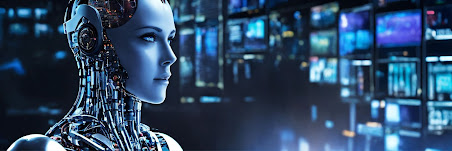The Rise of AI Artists
Unleashing the Creative Potential: The Rise of AI Artists
In the realm of artistry, innovation knows no bounds. From the Renaissance masters to the avant-garde movements of the 20th century, creativity has always been at the heart of human expression. But in today's digital age, a new phenomenon is emerging – the era of AI artists. These digital creators are not bound by the limitations of flesh and bone; they harness the power of artificial intelligence to push the boundaries of artistic possibility. In this article, we delve into the fascinating world of AI artists, exploring their origins, their techniques, and the impact they are having on the art world.
Understanding AI Artistry
Before delving into the realm of AI artists, it's crucial to understand what artificial intelligence truly entails. At its core, AI refers to the simulation of human intelligence processes by machines, particularly computer systems. These systems are programmed to analyze data, recognize patterns, and make decisions, mimicking cognitive functions typically associated with human minds.
The Birth of AI Artists
The concept of AI-generated art is not entirely new, but recent advancements in machine learning and deep learning algorithms have propelled it to new heights. One of the pioneers in this field is the Generative Adversarial Network (GAN), a type of artificial intelligence algorithm introduced by Ian Goodfellow and his colleagues in 2014. GANs consist of two neural networks – a generator and a discriminator – which work in tandem to produce realistic outputs. This breakthrough laid the foundation for AI artists to create visually stunning and conceptually rich artworks.
Exploring AI Artistic Techniques
AI artists employ a variety of techniques to generate their artworks, ranging from style transfer to neural style transfer. Style transfer involves applying the visual characteristics of one image to another, resulting in a unique blend of styles. Neural style transfer, on the other hand, utilizes deep neural networks to analyze and recombine the content and style of two separate images, producing striking compositions that blur the line between reality and abstraction. These techniques allow AI artists to explore new aesthetic possibilities and challenge traditional notions of artistic expression.
The Impact on the Art World
The emergence of AI artists has sparked both excitement and skepticism within the art world. Proponents argue that AI offers new avenues for creativity and innovation, democratizing the artistic process and challenging traditional hierarchies. Critics, however, raise concerns about the authenticity and originality of AI-generated art, questioning whether machines can truly possess creative agency. Despite these debates, one thing is clear – AI artists are here to stay, and their influence on the art world is only beginning to be felt.
Embracing the Future of Creativity
As we stand on the cusp of a new era in artistry, it's essential to embrace the potential of AI artists while also acknowledging the complexities and nuances of their craft. While AI may never replace the human imagination, it can serve as a powerful tool for augmenting and enhancing our creative endeavors. By embracing AI artistry, we open ourselves up to a world of endless possibilities, where the boundaries between man and machine blur, and creativity knows no limits.
In conclusion, the rise of AI artists represents a paradigm shift in the way we conceive of art and creativity. By harnessing the power of artificial intelligence, these digital creators are pushing the boundaries of artistic expression and challenging traditional norms. While questions remain about the authenticity and originality of AI-generated art, there is no denying the profound impact it is having on the art world. As we navigate this new frontier, let us embrace the future of creativity and celebrate the limitless potential of AI artists.

.jpg)

Comments
Post a Comment